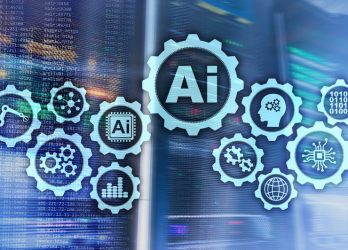Transparency, Efficiency, and Security
The U.S. grant administration is undergoing a metamorphosis, driven by the relentless pursuit of transparency, efficiency, and security. Emerging technologies like blockchain and artificial intelligence (AI) stand poised to revolutionize how grants are managed and distributed. However, integrating these cutting-edge tools presents unique challenges for software testing professionals tasked with ensuring their secure and seamless operation.
Testing Challenges:
Blockchain technology offers a compelling vision for enhanced transparency and accountability in grant disbursement. Its tamper-proof, immutable ledger facilitates secure transactions and auditable trails, mitigating fraud and misuse of funds. However, testing blockchain-based grant systems presents a distinct challenge that lies in its distributed and decentralized nature.
The primary hurdle lies in ensuring smooth interoperability with existing IT infrastructure and legacy systems. Rigorous integration testing becomes paramount. We must validate seamless data flow between blockchain networks and grant management platforms, safeguarding data consistency and integrity across disparate systems.
On the other hand, AI integration introduces a different labyrinth. Testing AI-driven grant systems necessitates scrutinizing functionalities like natural language processing (NLP) for application processing and predictive analytics for grant allocation. Validating AI algorithms for accuracy, fairness, and bias demands sophisticated testing methodologies and comprehensive datasets to assess performance under diverse scenarios.
Testing Solutions: A Proactive Approach
To navigate these challenges, software testing professionals must adopt a proactive stance. Leveraging advanced testing frameworks specifically tailored to blockchain and AI is essential for ensuring secure and efficient integration.
For blockchain-based systems, a combined approach of functional and non-functional testing is crucial. Functional testing verifies smart contracts and transactional logic, while non-functional testing focuses on scalability, performance, and security. Implementing blockchain-specific tools like ‘Ethereum Tester’ and ‘Hyperledger Caliper’ streamlines testing processes and maximizes test coverage.
Similarly, testing AI-driven grant systems necessitates specialized strategies to validate the accuracy and reliability of algorithms. Techniques like test-driven development (TDD) and continuous integration (CI) enable iterative validation of AI models, identifying potential issues early in development. Additionally, leveraging synthetic data generation and adversarial testing methodologies can help uncover vulnerabilities and biases in AI algorithms.
Industry Validation: Investing in Innovation
The criticality of rigorously testing emerging technologies in grant systems has garnered recognition from industry leaders across the government sector. The National Science Foundation (NSF) exemplifies this commitment by investing in research projects aimed at developing testing frameworks specifically for blockchain and AI applications in grant management.
Conclusion:
Testing emerging technologies like blockchain and AI in U.S. grant systems presents both hurdles and opportunities for software testing professionals. By adopting advanced testing methodologies and leveraging industry best practices, organizations can ensure the secure and efficient integration of these technologies. This paves the way for a more transparent, accountable, and efficient grant administration process. As government agencies continue to embrace innovation, prioritizing rigorous testing of emerging technologies will be essential for unlocking the full potential of modern grant systems.


